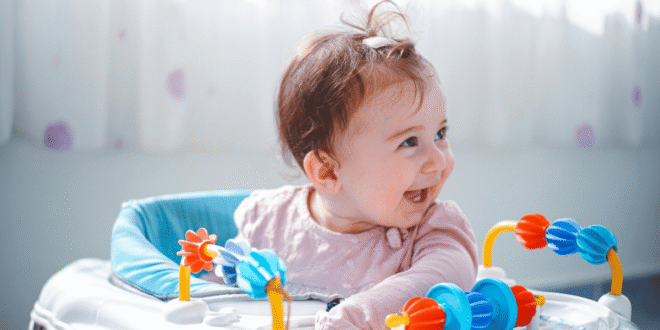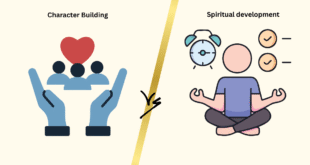The infancy stage, from birth to 2 years is one of the most fascinating and rapid periods of human development. During these early years, babies go through remarkable changes physically, emotionally, cognitively, and socially.
Understanding this crucial stage equips parents and caregivers to nurture their child’s growth, recognize developmental milestones, and respond to their needs effectively.
In this comprehensive guide, we will explore the child development stages during infancy, key milestones, influencing factors, common challenges, and actionable parenting tips to ensure your baby has the best possible start in life.
Why the Infancy Stage (0–2 Years) is So Important
The first two years of life lay the foundation for a child’s future. Brain development is at its peak during this period, with billions of neural connections forming every second.
Some reasons why this stage is critical include:
- Foundation for future learning: Early experiences shape intelligence, behavior, and emotional health.
- Physical growth: Babies triple their birth weight and develop essential motor skills like sitting, crawling, and walking.
- Bonding and attachment: Secure relationships built now influence lifelong social and emotional well-being.
- Language development: The groundwork for communication and literacy begins in infancy.
- Early intervention: Recognizing delays early helps prevent long-term developmental issues.
By understanding child development stages, parents can provide appropriate care and create a nurturing environment that promotes healthy growth.
Key Areas of Development During Infancy
Child development in the infancy stage can be categorized into five major areas:
- Physical Development – Growth of the body and motor skills.
- Cognitive Development – Thinking, problem-solving, and learning.
- Language Development – Speech, communication, and comprehension.
- Social Development – Building relationships and interacting with others.
- Emotional Development – Understanding and expressing feelings.
Each area progresses through predictable milestones, though every baby develops at their own pace.
Physical Development in Infancy (0–2 Years)
The physical growth of infants is rapid and dramatic. Parents often notice visible changes week by week.
- Growth Patterns
- Babies double their birth weight by 5–6 months and triple it by their first birthday.
- Height increases by about 10 inches (25 cm) in the first year.
- Head circumference grows significantly, indicating brain development.
- Gross Motor Skills
These are large muscle activities like crawling and walking:
- 0–3 months: Lifts head while on tummy, moves arms and legs actively.
- 4–6 months: Rolls over, sits with support.
- 7–9 months: Sits without support, begins crawling.
- 10–12 months: Pulls to stand, cruises along furniture, takes first steps.
- 12–24 months: Walks independently, begins to run, climbs stairs with assistance.
- Fine Motor Skills
These involve small, precise movements:
- 0–3 months: Grasps objects reflexively.
- 4–6 months: Reaches for and holds toys intentionally.
- 7–9 months: Picks up small objects using thumb and finger (pincer grasp).
- 10–12 months: Points, waves, feeds self with fingers.
- 12–24 months: Builds small block towers, uses spoons, begins scribbling.
Parent Tip:
Provide safe spaces for exploration and age-appropriate toys like stacking blocks, rattles, and soft books to encourage motor skill development.
Cognitive Development in Infancy
Cognitive development refers to how infants learn, think, and solve problems. The first two years are crucial for intellectual growth, as the brain is highly active and adaptable.
Key Milestones:
- 0–3 months: Recognizes caregiver’s voice and face, follows objects with eyes.
- 4–6 months: Shows curiosity about surroundings, explores with hands and mouth.
- 7–9 months: Understands cause-and-effect (e.g., shaking a rattle makes noise).
- 10–12 months: Develops object permanence understands things still exist even when out of sight.
- 12–24 months: Solves simple problems, imitates actions, begins pretend play.
Parent Tip:
Talk to your baby frequently, narrate daily activities, and provide stimulating toys to promote problem-solving and curiosity.
Language Development in Infancy
Language development begins long before a baby speaks their first word. During infancy, children absorb sounds, rhythms, and meanings of language.
Stages of Language Growth:
- 0–3 months: Coos, cries differently for different needs.
- 4–6 months: Babbles with repetitive sounds like “ba-ba” or “da-da.”
- 7–9 months: Responds to their name, understands simple words like “no.”
- 10–12 months: Says first words like “mama” or “bye.”
- 12–24 months: Vocabulary expands rapidly, begins combining two words (“more milk”).
Parent Tip:
Read aloud daily, sing songs, and maintain eye contact while speaking to your baby. Respond to their coos and babbles to encourage communication.
Social Development in Infancy
Social development involves forming relationships and learning how to interact with others.
Milestones:
- 0–3 months: Smiles responsively (social smile).
- 4–6 months: Enjoys peek-a-boo, recognizes familiar people.
- 7–9 months: Shows fear of strangers, prefers primary caregiver.
- 10–12 months: Waves bye-bye, plays simple games.
- 12–24 months: Shows affection, plays alongside other children (parallel play).
Parent Tip:
Give plenty of attention and affection. Play interactive games to build trust and encourage social skills.
Emotional Development in Infancy
Emotional development focuses on how babies understand and express feelings.
- Birth to 3 months: Expresses emotions through crying, smiling, cooing.
- 4–6 months: Laughs, shows excitement.
- 7–9 months: Develops attachment, shows anxiety when separated from caregivers.
- 10–12 months: Demonstrates anger or frustration.
- 12–24 months: Begins to express independence and may have tantrums.
Parent Tip:
Stay calm during emotional outbursts. Validate your baby’s feelings and provide comfort to build a sense of security.
Developmental Milestone Timeline (0–24 Months)
| Age Range | Physical | Cognitive | Language | Social/Emotional |
| 0–3 months | Lifts head, reflexive grasp | Recognizes faces, tracks objects | Coos, different cries | Smiles responsively |
| 4–6 months | Rolls over, sits with support | Explores objects | Babbles, responds to voice | Enjoys peek-a-boo |
| 7–9 months | Sits alone, crawls | Understands cause-effect | Understands simple words | Stranger anxiety |
| 10–12 months | Pulls to stand, walks holding furniture | Object permanence develops | Says first words | Waves, shows affection |
| 12–18 months | Walks independently | Solves simple problems | Vocabulary growth | Parallel play begins |
| 18–24 months | Runs, climbs | Pretend play | Two-word sentences | Shows independence |
Factors Influencing Infant Development
Several factors affect how a baby progresses through the child development stages:
- Genetics: Natural traits like growth patterns and temperament.
- Nutrition: Breastfeeding and a balanced diet support brain and body growth.
- Environment: Safe, stimulating surroundings promote exploration.
- Parental Interaction: Talking, reading, and playing accelerate development.
- Health: Regular medical checkups ensure proper growth.
- Culture and Society: Beliefs and parenting practices influence milestones.
Common Challenges During Infancy
Even with normal development, some infants face challenges that require attention.
-
Developmental Delays
- Speech delays: Limited babbling or vocabulary growth.
- Motor delays: Difficulty sitting, crawling, or walking.
- Cognitive delays: Trouble understanding cause-and-effect or object permanence.
When to seek help:
If your baby isn’t meeting milestones, consult a pediatrician or child development specialist early.
-
Sleep Problems
Infants often have irregular sleep patterns.
Tips:
- Establish a bedtime routine.
- Keep the sleep environment quiet and dark.
- Avoid overstimulation before bedtime.
-
Feeding Difficulties
Issues like poor latching, allergies, or picky eating may arise.
Solution: Work with a pediatrician or lactation consultant for guidance.
Parenting Tips for the Infancy Stage (0–2 Years)
- Build a secure attachment: Respond promptly to your baby’s needs.
- Read and talk daily: Boosts cognitive and language development.
- Encourage exploration: Provide safe spaces for crawling and walking.
- Limit screen time: Babies under 2 should have minimal exposure to screens.
- Maintain routines: Predictable schedules create a sense of security.
- Monitor growth: Keep track of weight, height, and developmental milestones.
- Offer healthy nutrition: Start with breast milk or formula, then introduce solid foods at 6 months.
- Celebrate milestones: Encourage your baby’s achievements, no matter how small.
Role of Play in Infant Development
Play is more than fun, it’s essential for learning.
- Sensory play: Rattles, textured toys, and water play enhance sensory skills.
- Physical play: Tummy time strengthens muscles.
- Social play: Interactive games like peek-a-boo foster bonding.
- Cognitive play: Stacking blocks or sorting shapes builds problem-solving skills.
Early Warning Signs to Watch For
Seek professional advice if your baby shows any of the following:
- No social smile by 3 months.
- Not sitting by 9 months.
- Not babbling by 12 months.
- No walking by 18 months.
- Lack of interest in surroundings.
Early intervention greatly improves developmental outcomes.
Conclusion
The child development stage of infancy (0–2 years) is a period of extraordinary growth and transformation. By understanding the milestones and supporting your baby’s needs through love, care, and interaction, you lay a strong foundation for lifelong health and success.
As a parent or caregiver, your role is crucial. Provide a safe environment, stimulate learning through play, and maintain open communication with healthcare providers to ensure your child’s well-being.
Every baby grows at their own pace, so be patient, celebrate progress, and enjoy the precious moments of this incredible journey.
 Edutarbiyah English Blog of Parenting and Tarbiyah
Edutarbiyah English Blog of Parenting and Tarbiyah



